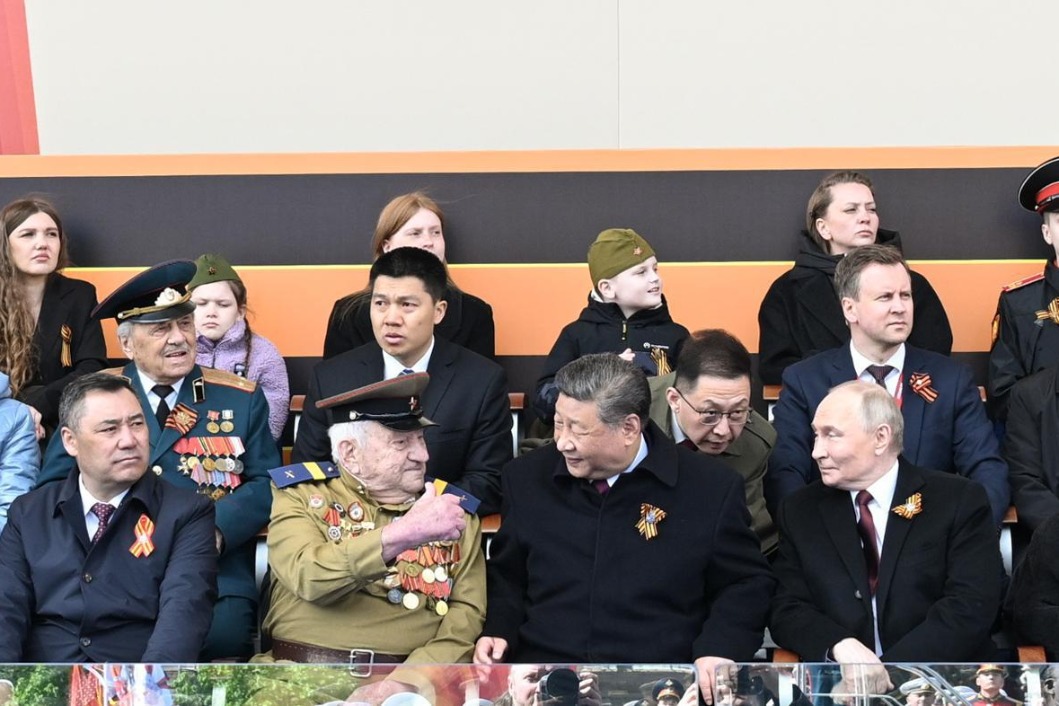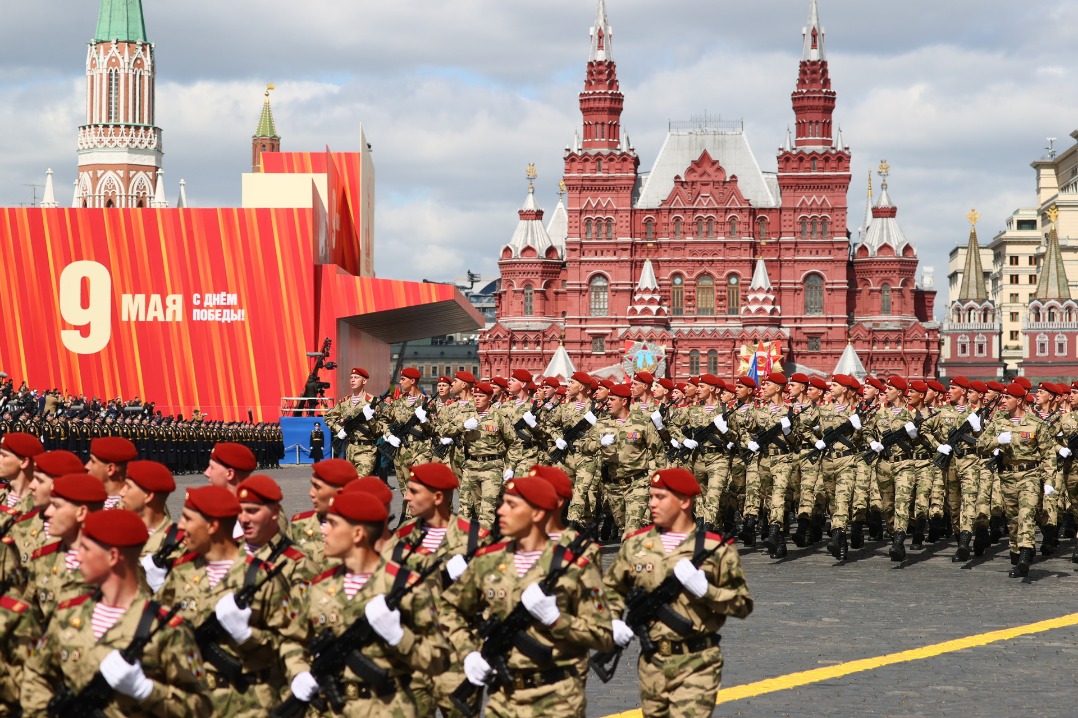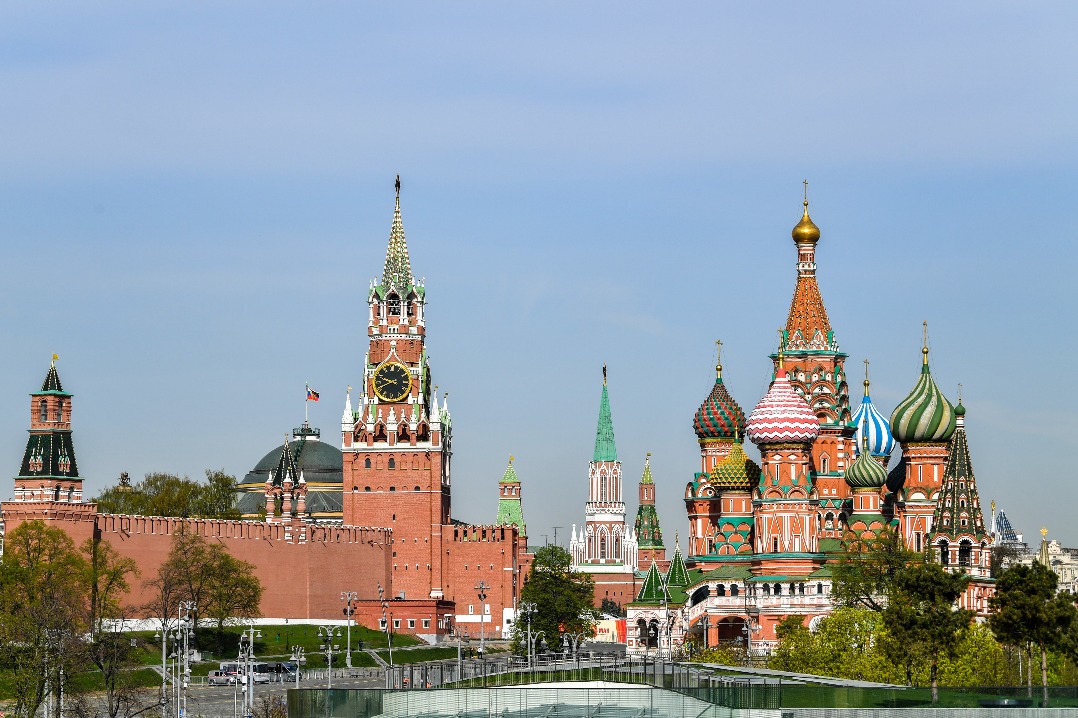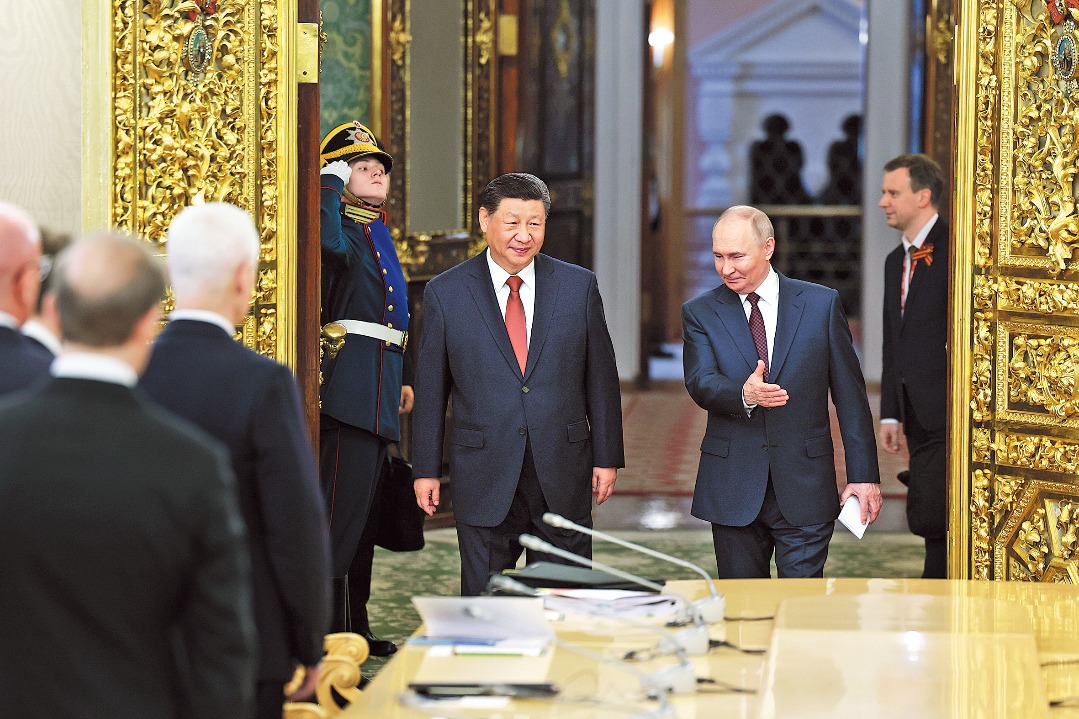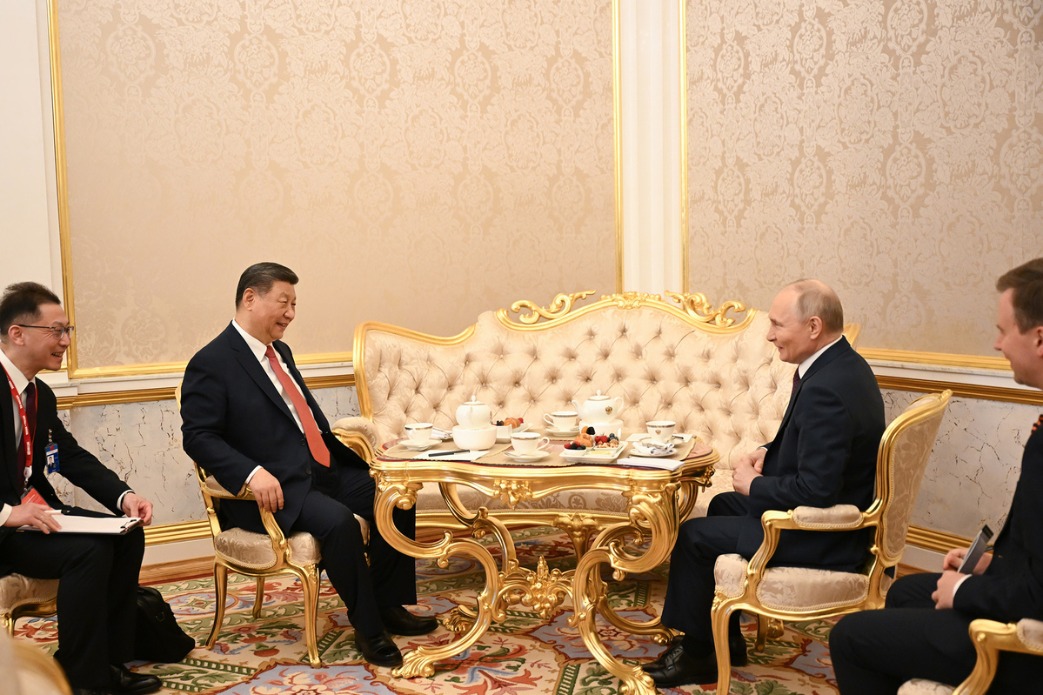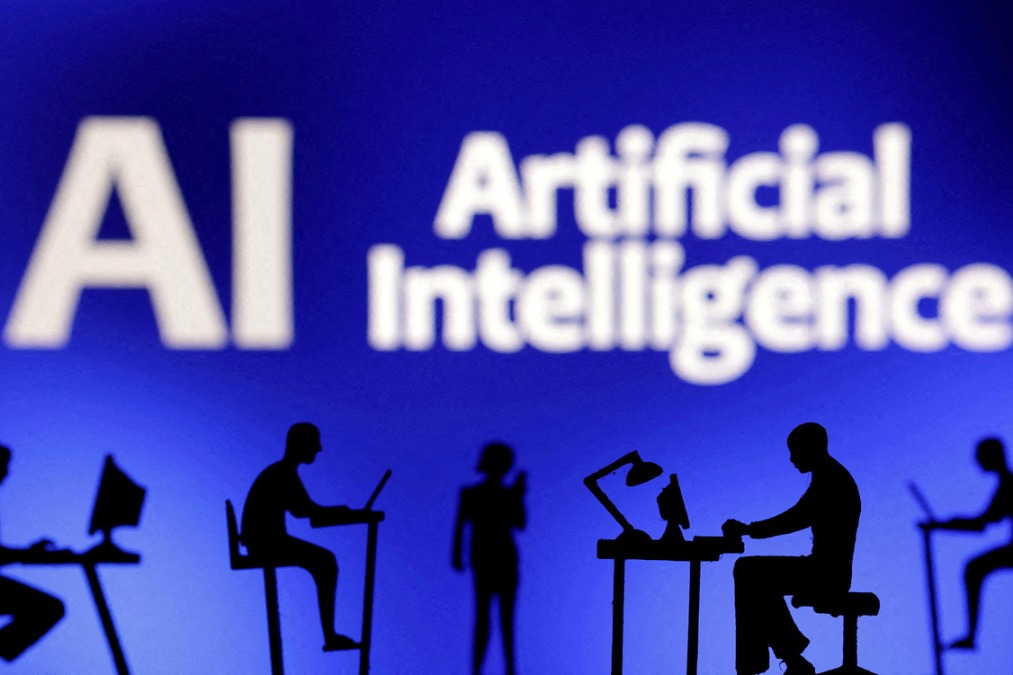United by common challenges


China and the US can work together to reduce methane emissions while ensuring global food security
To limit global warming, it is essential to curb methane emissions, which have 86 times the warming potential of carbon dioxide and can cause significant temperature increases within the next two decades.
As the world's two largest economies and energy consumers as well as the two largest food producers, China and the United States rank as the first and third-largest methane emitters, respectively. Both countries have substantial opportunities to reduce their methane emissions over the next decade.
Methane emissions from agrifood systems account for approximately 60 percent of the total methane emissions generated by human activities in 2021. However, the world currently has 735 million people living in hunger. Many of them depend on livestock and rice production (smallholder farmers in particular) and consumption (especially the undernourished population including millions of rice consumers in Asia). Livestock and rice production are major sources of methane emissions. Cutting down methane emissions while ensuring food security is an important development agenda for many countries in the world.
China and the US are the two top agricultural and food producing countries in the world. Their Methane emissions from agrifood systems ranked the second and fourth, accounting for 10.9 percent and 5.1 percent of the global total respectively in 2021. China emitted 20.46 million tons of methane, of which rice cultivation, enteric fermentation and manure waste were important sources, accounting for 25.7 percent, 32.9 percent and 5.8 percent, respectively. Methane emissions in the US mainly come from livestock, of which 62.7 percent and 15 percent come from enteric fermentation and manure waste, respectively.
In the past decade, both China and the US have taken various measures to reduce methane emissions, and sucessfully stopped the upward trend, even registering slight decreases. In the US, productivity growth in the livestock sector and reduced meat consumption have contributed to the reduction. The US released its US Methane Emissions Reduction Action Plan in 2021 and proposed to reduce overall methane emissions by 30 percent of the 2020 level by 2030.The US has increased research investment in methane reduction, focusing on the scientific measurement of methane emissions, research and development of livestock emissions reduction technologies, and rice field methane reduction. The US has also taken various practical measures to control methane emissions from livestock production, such as capturing methane emissions from livestock to use as renewable biogas fuel, spurring innovation in animal feed, and improving manure management processes.
For China, as early as 2015, the government proposed reducing fertilizer and pesticide use to control greenhouse gas emissions and increased the management and utilization of livestock and poultry manure. In 2023, the comprehensive utilization rate of livestock and poultry manure reached 78.3 percent. Reduced food loss and waste and improved management of animal manure have contributed to the emission reduction. More efficient use of fertilizer and water in rice field has led to reduced methane emissions. Equally important is increased livestock and rice productivity through breeding and other technological improvements that contributed to methane emission reduction per unit of agricultural and food production.
China launched even more ambitious Actions of Methane Control and Reduction in 2023, which proposed to promote the resource utilization of livestock and poultry manure to reach 85 percent in 2030, scientifically control methane emissions from enteric fermentation, and orderly promote methane emission control in rice fields as the starting point to promote methane emission control in the agricultural sector. China is also committed to take multiple technical measures to reduce methane emissions from rice paddies by optimizing water irrigation management, fertilization, organic material input and straw management.
In addition, China has begun to implement programs in agriculture, management of waste and the introduction of a carbon trade market.
In 2021, China and the US issued the China-US Joint Glasgow Declaration on Enhancing Climate Action in the 2020s. In 2023, China and the US issued a joint statement in Sunnyvale to reaffirm the commitment of the Glasgow Declaration and proposed to set up a number of working groups including one on methane and other non-CO2 GHG emissions. During the China-US working group meeting on Enhancing Climate Actions in the 2020s, both countries planned to host a second summit on methane and non-CO2 gas emissions during the COP29 in 2024, and made the commitments to cooperate on methane control and reduction technologies, monitoring, reporting and verification systems. But more concrete steps must be taken.
First, China and the US can further strengthen cooperation on standards, methods and related systems to monitor, report and verify methane emissions from different sources in agrifood systems through more and regular online or in-person meetings, webinars and exchange of experts. Second, the two countries can collaborate in research and development on emission reduction technologies, for example utilization of animal manure, emission control through intestinal fermentation, and emission reduction in rice fields, to achieve the synergistic effects of productivity growth, pollution control and emissions reduction. Third, collaboration on education and training should also be initiated and expanded to share practices and promote the application of new technologies. Finally, experience and lessons from the US and China can be shared with other countries for reducing global methane emissions while also ensuring food security. The latter is especially important for developing countries.
Fan Shenggen is dean of the Academy of Global Food Economics and Policy and chair professor at China Agricultural University. Zhang Yumei is a professor of the Academy of Global Food Economics and Policy at China Agricultural University. The authors contributed this article to China Watch, a think tank powered by China Daily. The views do not necessarily reflect those of China Daily.
Contact the editor at [email protected].
















